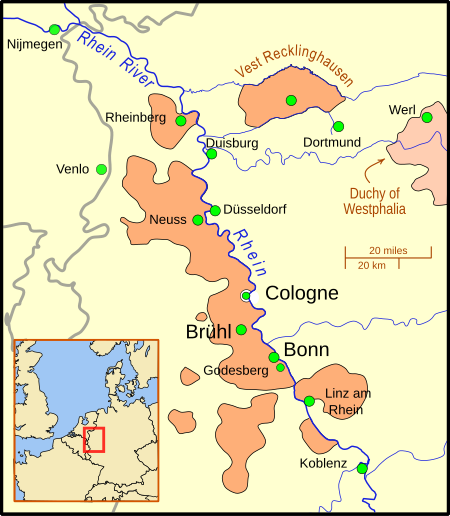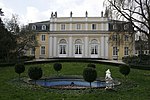Destruction of the Oberstift

The destruction of the Oberstift, which included Linz, Ahrweiler, and other small towns and villages, occurred in the opening months of the Cologne War, from Christmas Day, 1582 until the end of March, 1583. Over these few weeks, armies of the competing archbishops of Cologne burned the southernmost villages, cloisters, and small towns. In the Cologne War (1583–1589) two men competed for control of the Electorate of Cologne and sought to control one of the wealthiest Electorates in the Holy Roman Empire. Their contest lasted until 1589, when Gebhard Truchsess von Waldburg renounced his claim and moved to Strassbourg; Ernst of Bavaria became uncontested Prince elector of Cologne, the first Wittelsbach to hold the position; his family maintained their hold on it until 1761. Under his direction, Jesuits introduced the Counter-Reformation to the north-western German states and under the leadership of his successors, these territories remained a Catholic stronghold until the late eighteenth century.
Excerpt from the Wikipedia article Destruction of the Oberstift (License: CC BY-SA 3.0, Authors, Images).Destruction of the Oberstift
Waldstraße, Bonn Bad Godesberg
Geographical coordinates (GPS) Address Nearby Places Show on map
Geographical coordinates (GPS)
| Latitude | Longitude |
|---|---|
| N 50.683333333333 ° | E 7.1333333333333 ° |
Address
Waldstraße 31a
53177 Bonn, Bad Godesberg
North Rhine-Westphalia, Germany
Open on Google Maps









